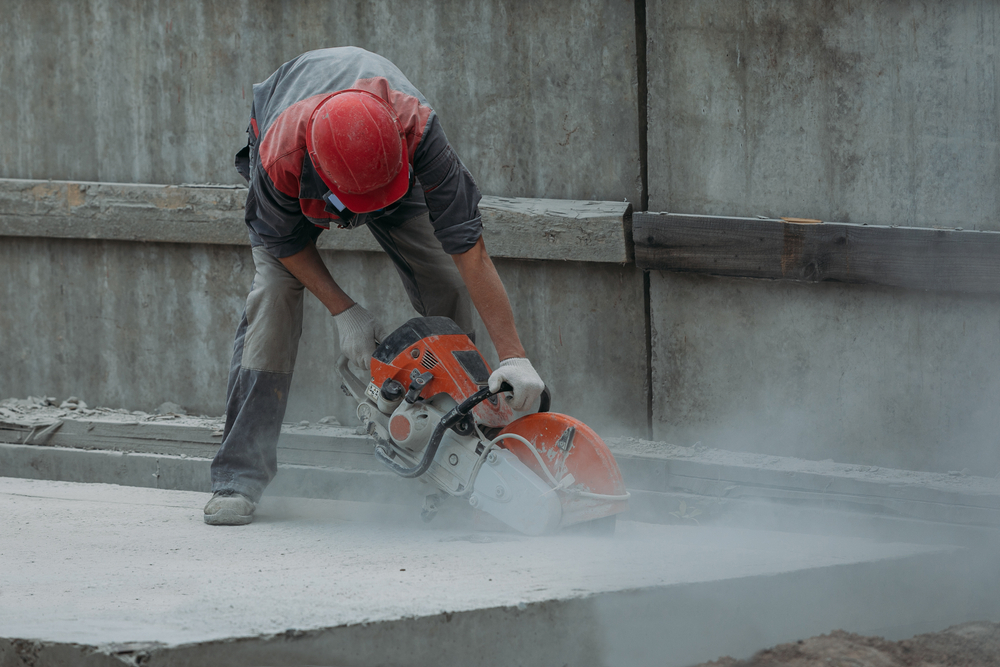Concrete sawing is fairly essential to the whole construction process. And because concrete quality varies with different types of projects, concrete techniques vary too.
This means that different concrete cutting techniques are used for various purposes.
Some of the factors that need to be considered when deciding what concrete cutting technique to use include the following:
- Type of concrete
- Materials used for the concrete
- Strength of the concrete
- Thickness
- Type of infrastructure
- Indoor or outdoor concrete
There are only two methods of concrete sawing:
- Dry sawing – this method is only suited for outdoor concrete sawing because it generates an enormous amount of dust. Dry sawing requires the use of diamond blades to prevent the sawing machine from overheating and to reduce the production of dust.
- Wet sawing – the most popular method because it produces less dust and is environment-friendly. The blade does not overheat because the water keeps it cool.
The type of sawing technique and the type of saw you use is the most important consideration in concrete cutting.
Concrete Sawing Techniques And Their Benefits
Chain Sawing
- Precision cuts
- No over cuts
- Perfect corners
- Straight lines
Core Drilling
- Perfect tubular holes
- Quick and easy
- Makes light work when creating holes for electrical wiring, cables, plumbing, and anchor bolts
- Can drill at any angle even upside down
Diamond Drilling
- Quick and precise cuts
- Perfect for acute corner-cutting and small concrete edits
- It is quiet, so it’s good for residential use
Flat Drilling
- Avoids broken wiring pipes and engrained materials
- Useful when there are utility lines underneath the concrete
- Less likely to severe any important areas
Floor Sawing
- Perfect holes and cuts for concrete floors, roads, and slabs
- Precise cuts on flat concrete surfaces
Ring Sawing
- Perfect for small to medium concrete projects
- Because it uses handheld saw machines, it is easy to use and provides accurate holes and openings
Slab Sawing
- Perfect for bigger projects
- Can handle bridges, roads, roofs, and even water channels
- Can be used for both indoor and outdoor cutting
- Can cut up to 32 inches
Wall Sawing
- Can cut up to one metre deep on each side of the wall
- It can cut any angle
- Used for removing vertical sections for HVAC, elevator openings, stairs, and windows.
Wire Sawing
- Used for removing large portions of concrete
- Very versatile
- It can cut lengths and depths that the spindle-mounted blades can’t
- Used for abutments, equipment pads, foundations, pillars, and thick walls
- Safe
- Less noise
SAFETY FIRST
Handling high-powered concrete sawing equipment is dangerous. Therefore, all the necessary safety precautions should be followed at all times including wearing your safety protective gear at all times.
Concrete protective gear includes:
- Goggles – concrete sawing produces dust, and there are small to big chunks of concrete materials flying around, and other harmful particles that can cause severe and permanent damage to your eyes and your eyesight.
- Face mask – avoid inhaling dust. Concrete dust contains crystalline silica. Prolonged exposure can lead to fatal lung problems. Several studies indicate a link between crystalline silica and lung cancer.
- Ear protection – concrete sawing can be very noisy. Be sure to protect your ears by using noise-cancelling earmuffs.
- Helmet – construction work requires the use of protective, industry-standard head protective gear. Saw cutting can cause small to large concrete chunks to fly around so keep your head safe by wearing a helmet.
- Gloves – Keep your fingers safe by wearing the right gloves for cutting concrete.
- Steel-Toe Boots – When dealing with concrete, keep your limbs safe all the time by wearing steel-toed boots.
- Protective Clothing – With concrete flying around along with dust and other potential hazards, make sure you follow the required clothing guideline to stay safe.
Also be mindful of the following:
Control the Dust – keep dust production to a minimum. Wet sawing is highly recommended and always wear your personal protective equipment.
Keep Organised – make sure there are no wires and other materials that can trip you when you are sawing. Keep the area clean.
Unplug, Turn-off, and Deactivate Equipment When Not In Use – always keep your machines unplugged, turned-off, and deactivated when you are not using to avoid any accidents and potential harm to humans and infrastructure.
Final Thoughts
Dealing with concrete sawing requires professional training and knowledge as well as extensive experience. Concrete sawing can be very risky and should really only be attempted by professionals.
If you are looking for a specialist concrete cutting company who uses only the best practices to get the job done right, then please call us at Megasaw on 1300 920 419 or contact us through our website.

